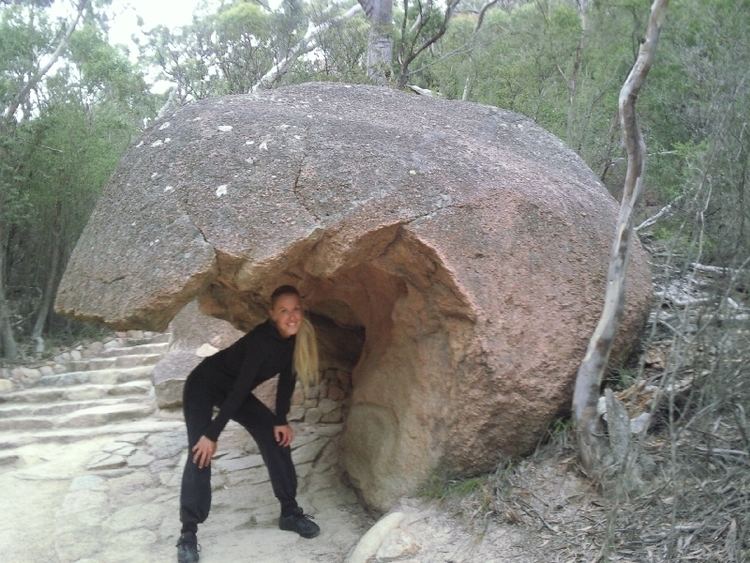Population 853 (2011 census) State electorate(s) Lyons Area 151.1 km² Local time Wednesday 7:24 PM | Postcode(s) 7215 Mean max temp Mean min temp Postal code 7215 Federal division Division of Lyons | |
 | ||
Location 37 km (23 mi) from Coles Bay
43 km (27 mi) from Swansea
44 km (27 mi) from St Marys
106 km (66 mi) from Campbell Town LGA(s) Glamorgan Spring Bay Council Weather 22°C, Wind N at 18 km/h, 82% Humidity Points of interest Douglas‑Apsley National Park, Freycinet National Park, East Coast Natureworld, Bicheno Motorcycle Museum, Whalers Lookout Scenic re | ||
Bicheno /ˈbɪʃɛnoʊ/ is a town on the east coast of Tasmania, Australia, 185 km north-east of Hobart on the Tasman Highway, with a population of 853. It is part of the municipality of Glamorgan/Spring Bay. The town is primarily a fishing port and a beach resort.
Map of Bicheno TAS 7215, Australia
The town was named after James Ebenezer Bicheno, the British Colonial Secretary for Van Diemen's Land from 1843 to 1851.
The first historical reference to the place that was to become Bicheno was made by Brian May during his circumnavigation of Van Diemen's Land. He landed here (when it was known as Waubs Harbour) to dry his provisions. From 1803 Waubs Harbour was used as a whaling port. Bicheno was proclaimed a township in 1866. Bicheno Post Office opened as a receiving house on 1 January 1855.
Near the tennis courts is the grave of Wauba Debar (after whom Waub's Harbour was named), an aboriginal who was stolen from her tribe as a teenager to become a "sealer's woman". Her bravery in rescuing two sealers in a storm is commemorated by a headstone.
The hinterland was established for farming in the mid-1840s, which continues today. Coal was discovered in 1848. In 1854, the harbour was expanded to provide port facilities for the coal mines at Denison River. The coal was transported to the port via a 5‑km horse-drawn tramway.
The use of Bicheno as a coal port was short-lived. The discovery of gold in Victoria saw most of the residents depart in 1855 and for nearly a century, Bicheno became a sleepy little fishing village. Fishing has continued to be the lifeblood of the town with substantial quantities of crayfish, abalone, scallops and trevally. In recent times it has become a popular tourist destination, with a range of accommodation, craft shops, two small aquaria, and a visitor centre. Visitors are also attracted to the little penguin colony on adjacent Diamond Island A nearby point of interest is the Bicheno Blowhole. A famous resident is the world champion swimmer Shane Gould.
In September 2003 a memorial to the Merchant navy was unveiled in Bicheno. Five months later, in February 2004, the town presented a freedom of entry charter to the Australian Merchant Navy, the first time any locality in the world has granted 'freedom of the city' to the merchant Navy. Local primary school children have been appointed custodians of this memorial, built near Wauba Debar's grave.
At the Australian federal election, 2016 the Bicheno booth recorded the following number of votes for each party: Liberal 278 (46.88%), Labor 178 (30.03%), The Greens 85 (14.33%), Recreational Fishers 44 (7.42%), Renewable Energy 6 (1.01%) & Christian Democrats 2 (0.34%).
